Anyone else out there an aspiring plant mom? I wouldn’t say I have a green thumb, but I love my houseplants! Adding plants to your home brings in color, texture, and vibrancy. Plus, houseplants also act as air purifiers, pulling toxins like formaldehyde out of the air and changing it into clean, fresh oxygen for you and your pets to breathe easier. But, before you run out and stock up on all the cute green babies you can find, check out this list of my favorite pet friendly houseplants!
Choosing pet friendly plants is important, as many popular houseplants are toxic to pets and can cause symptoms ranging from mild (vomiting) to severe (death)! It’s important to be very mindful of what plants you bring home, and to keep an eye on your pets to see if they are interested in nibbling on the leaves or not.
Neither my cat nor my dogs have ever exhibited an interest in chewing on the indoor plants, despite the fact that June and Margot both regularly chow down on grass and weeds outside. Still, I always try to choose non toxic indoor plants just to be safe, and if I do bring home any toxic plants (like pothos), I make sure they are out of reach of the pets.
Luckily, there are so many beautiful and easy-to-care for house plants that are safe for dogs and cats. Here are my top 8 choices for pet friendly houseplants, and a few tips and tricks to help you keep them alive.
African Violet
This sweet little plant is one of my absolute favorite dog friendly plants. It’s also one of the cat friendly indoor plants! They are non-toxic and they do really well indoors and they flower. It’s like a triple threat for an indoor plant.
African Violets have the cutest little flowers to add a nice pop of color to your home, but their soft green foliage is equally as lovely when the plant isn’t blooming. Although African Violets do well in low light conditions, they flower better with some sunny encouragement. To help your African Violet thrive, place it in a spot where it gets decent indirect light and water about once per week or enough to keep the soil slightly moist.
Pro Tip: Water underneath the leaves at the base of the plant rather than showering it from above– the leaves don’t like to get wet!
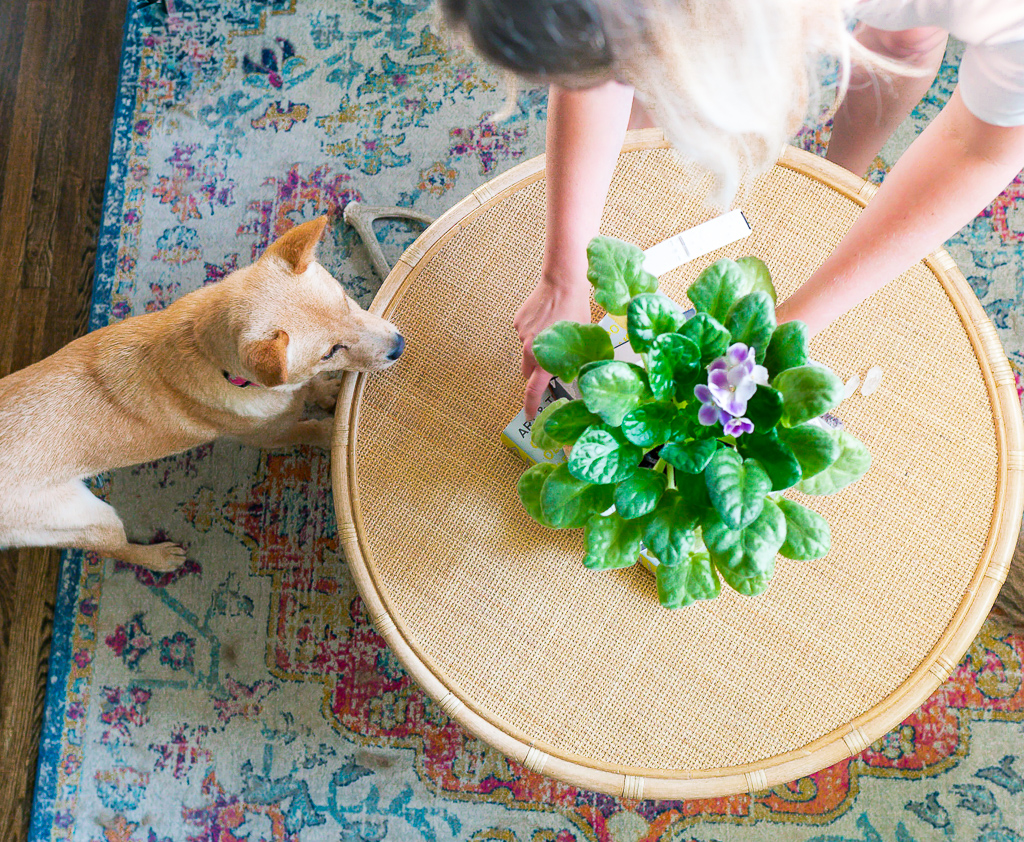
Money Tree
This pet friendly houseplant is incredibly low maintenance and durable, which means it bounces back easily even if you treat it rough. Mine was literally knocked off a window sill, lost half it’s soil, and then grew white fuzzy mold on the soil it had left, and it is STILL alive and beginning to bounce back. It looks a little peaky right now, but it’s starting to put out new growth.
That said, if you do take good care of your Money Tree, it will thrive and can grow to be quite tall– 60 feet in the wild, though indoor versions are usually 3 to 6 feet high. The houseplant version of this tree usually comes with braided trunks, which is an unnatural feature but one you can easily maintain.
Money Trees do well in indirect sunlight and love humidity, so this is a great plant for bathrooms!
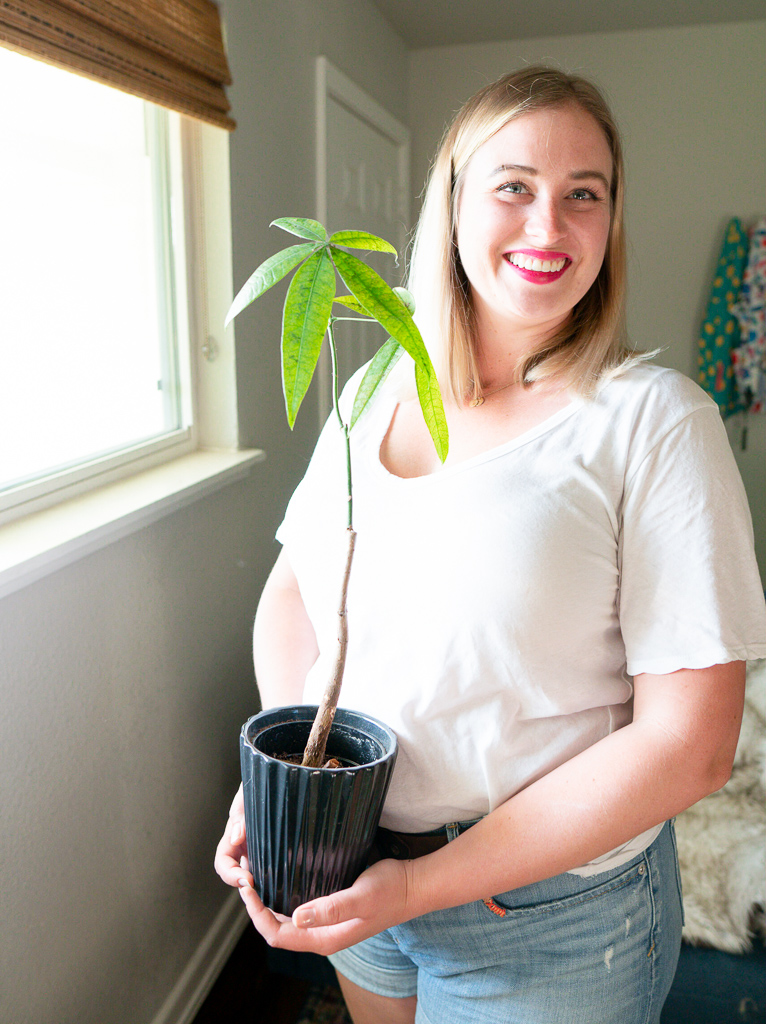

Boston Fern
These dog friendly house plants are thick, lush, vibrantly green, and add lots of showy texture to your home! You can place them on a pedestal, hang them from a basket, or even put them on a porch or balcony that doesn’t get too much direct sunlight. And yes, they are 100% pet safe!
My two big, beautiful Boston Ferns actually came with our house, which we bought last May. Mine live outside, and they got scorched in our summer heat last summer! But, I cut them back at the end of winter and they have bounced back beautifully.
The key to the Boston Fern is environment. They prefer bright indirect light and lots of humidity, so this is another great choice for a bathroom. Alternatively, you can place them on a tray of pebbles with water, or try misting them once or twice a week if you live in a dry climate (or if it is winter and your home is dried out thanks to your heater).
Pro Tip: keep them out of the direct draft of your AC or heater to prevent drying them out!
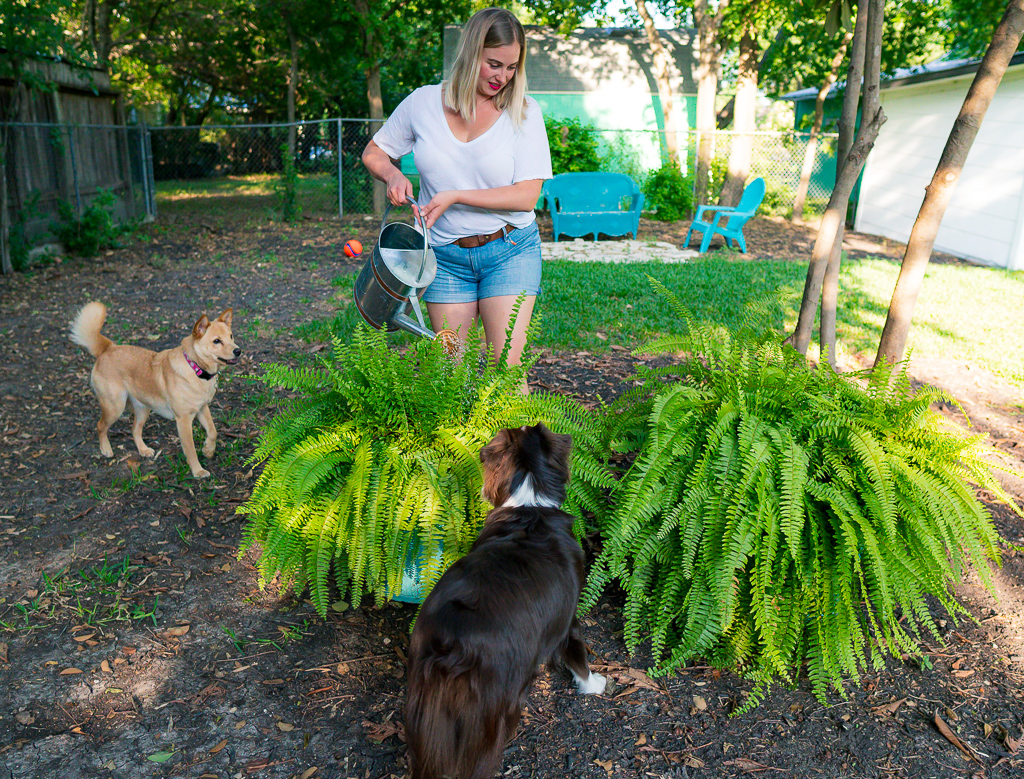

Christmas Cactus
I got my first Christmas Cactus when my neighbors at one of my old apartments moved out and left this guy behind. He was very small and totally neglected, but somehow he still managed to bloom brilliantly around Christmas and Easter. One look at those brilliant pink flowers and I was hooked.
Despite it’s name, the Christmas Cactus does not have any thorns. It is, however, a succulent, so it will prefer bright sunny light and minimal water. My mom also told me this about the Christmas Cactus: at first it sleeps, then it creeps, then it leaps! That means when you first get one, it might not grow much. Then, you’ll notice a little bit of growth before it explodes with growth.
One key factor to getting your Christmas Cactus to bloom is to ensure it gets adequate sunlight, and to avoid moving it once it puts out buds. I moved mine this last Christmas an all the buds fell off before they bloomed! Happily, this plant looks just as good without flowers.
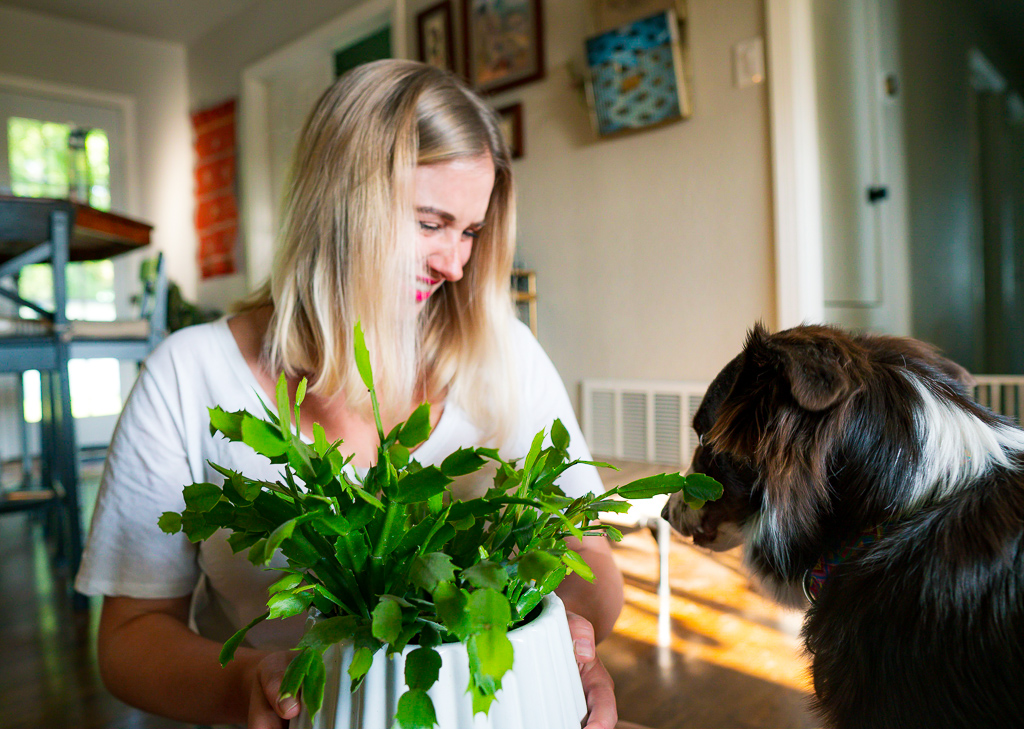

Prayer Plant
In my opinion, this is one of the showiest pet friendly houseplants out there. It does well spilling over in a pot, growing along a flat surface, or hanging from a basket. They are slow growers, which is nice, because that means they stay pretty contained without requiring much maintenance. They do put out little flowers, but they are not very attractive. I usually trim these off, along with any dead or dried out leaves.
One of my favorite things about the Prayer Plant is how showy they are! There are different color variations, including a variegated version. Like all variegated plants, you’ll get more defined variegation if your plant gets better light. That said, Prayer Plants prefer indirect light, so avoid places where the sun will beat down on the leaves directly.
Prayer Plants also prefer lots of moisture, so be sure to water them once the surface starts to dry out. If the leaves of your Prayer Plant keeping turning yellow and dried, it probably needs more watering! Luckily, they bounce back pretty well after some neglect. Just trim the dead bits off and start over.
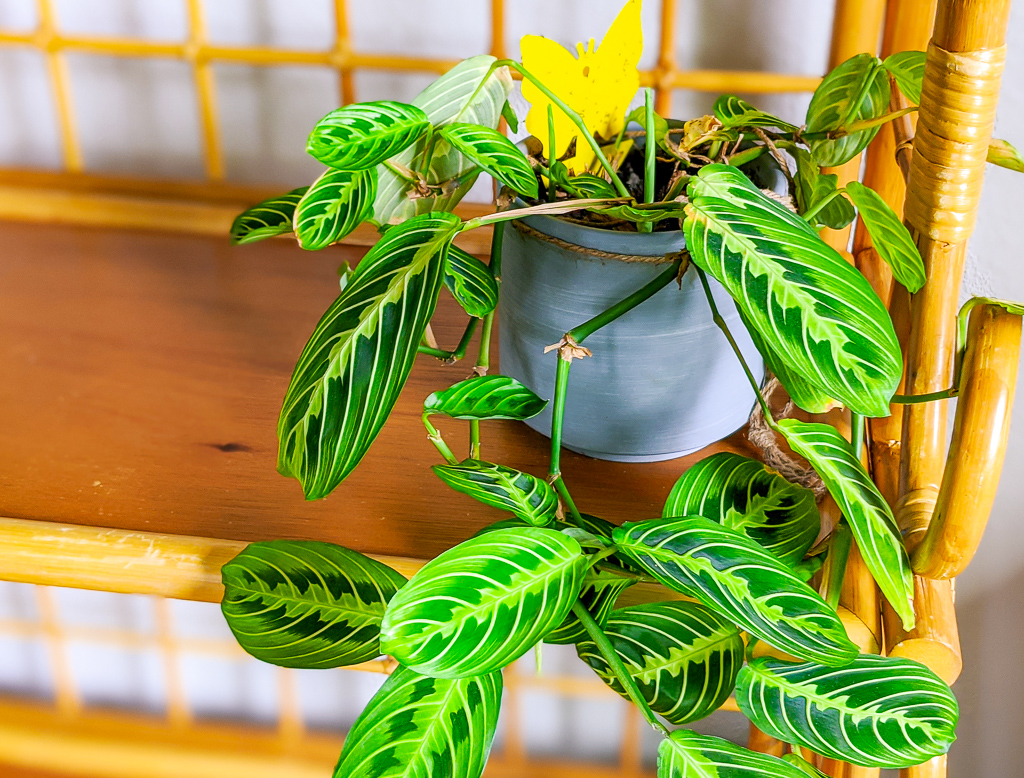

Areca Palm
Looking to add a little tropical vibe to your home or patio? So many palms are poisonous to dogs, but not the Areca palm! This is one of the large indoor plants safe for dogs, and it will thrive in a sunny spot in your home or outside on your patio.
To keep your Areca looking full and fresh (which, confession, mine does NOT), be sure to keep it in a nice, humid environment. You can set the pot on top of a shallow tray with pebbles and water to act as a humidifier, or mist the leaves regularly.
I’ve read that Areca palms can be a challenge, but I’ve provided mine with fairly little care and it’s still doing great. No, it is not as lush and green as it could be, but it is trucking along and putting out new growth, and that keeps me happy!
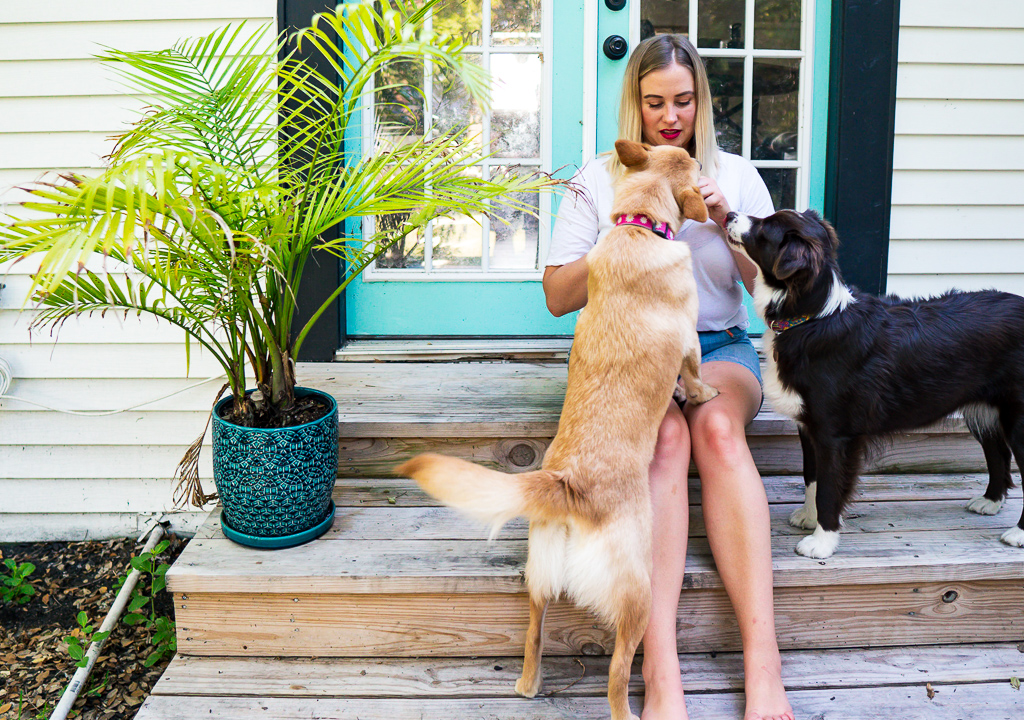

Peperomia
Another sweet, compact little houseplant that boasts a huge variety of colors and shapes within its species. That means you’ll get a nice ornamental houseplant without fussing about flowers and blooms. Peperomia are drought resistant and slow growing, which makes them incredibly easy to care for.
My first Peperomia was terribly neglected when I first bought it, but it managed to hang on. I frequently forget to water these dudes, yet they never seem to mind.
Peperomia are smaller, more compact houseplants, which makes them well suited to a window sill location. They enjoy bright light, but can tolerate shade, too. Just remember that less sunlight means the variation and leaf colors might not be as distinct. These plants don’t need too much water to be happy; just water whenever the soil dries out completely.
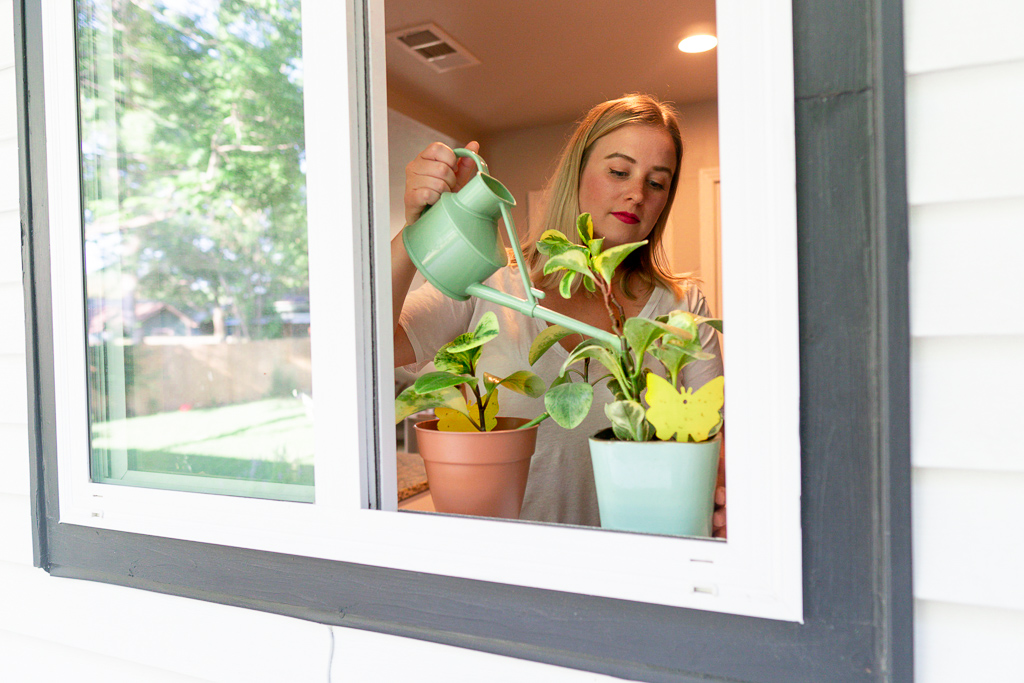

Spider Plant
I saved Spider Plant for last, because I haven’t actually owned one. BUT they are too lovely to leave off this list. Spider plants are great because they have really showy foliage, but are incredibly easy to care for. They also propagate like crazy, so one spider plant will give you many spider plants.
If you like the aesthetic of lush foliage spilling over the sides of a hanging planter or a wall basket, this is your plant. They also look stunning in tall planters! They prefer bright, indirect light, but tolerate shadier conditions as well. Water them often, and keep their soil aerated by using a chopstick to poke around the soil in the pot.
What Houseplants are Not Pet Friendly?
There are a lot of plants simply aren’t safe for our furry friends. A few common houseplants that are toxic to dogs and cats include pothos, rubber tree, fiddle leaf fig, lilies, ivy, aloe vera, ZZ plant, monstera, and more.
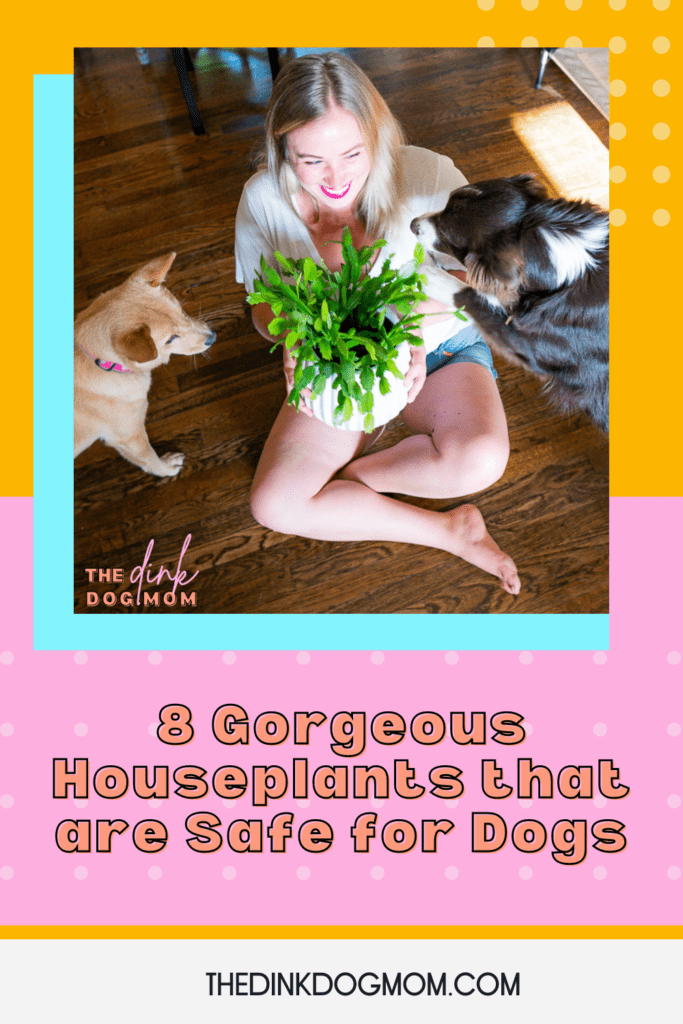


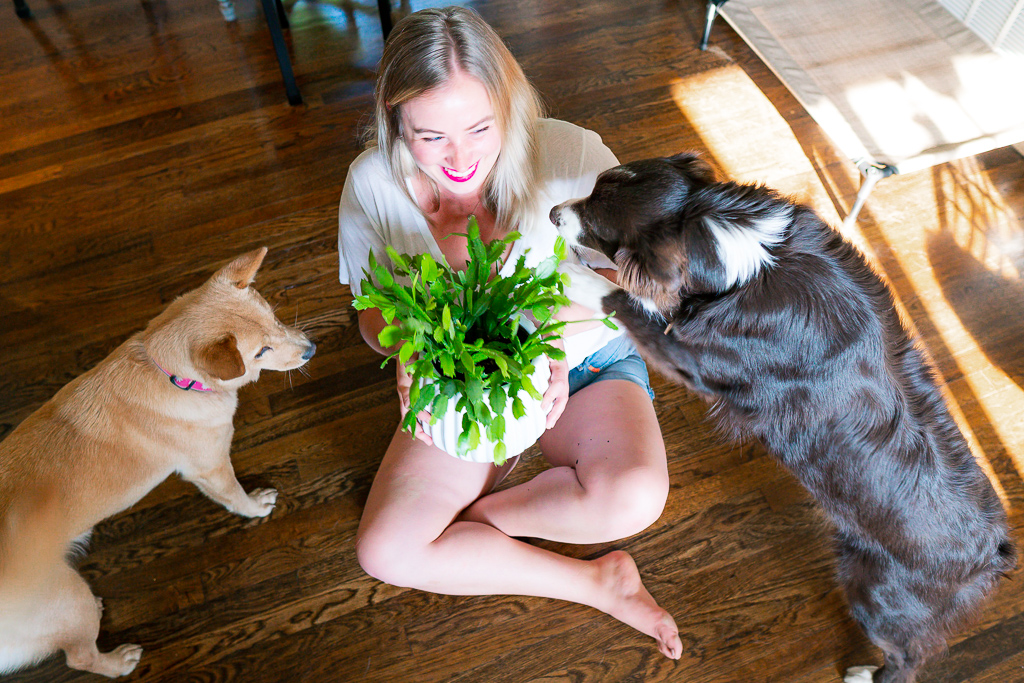




3 Responses
This plant is low maintenance and can improve indoor air quality, making it a good choice for homes with pets.
Can’t wait to get some of these pet friendly plants for our new house!!! Such great tips! Thanks for sharing 🙂
So glad you enjoyed it! Congrats on the new house!